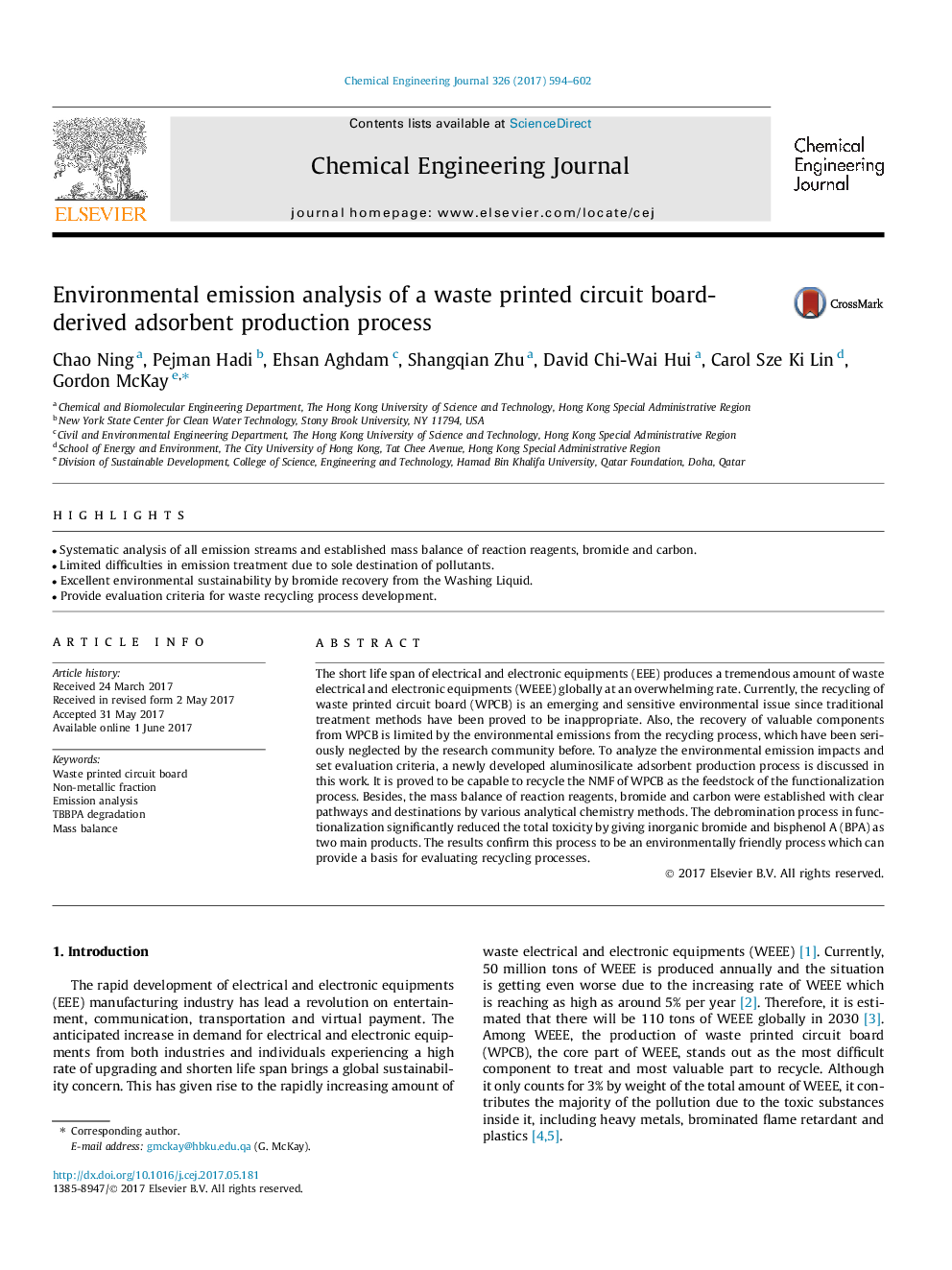| Article ID | Journal | Published Year | Pages | File Type |
|---|---|---|---|---|
| 6465486 | Chemical Engineering Journal | 2017 | 9 Pages |
â¢Systematic analysis of all emission streams and established mass balance of reaction reagents, bromide and carbon.â¢Limited difficulties in emission treatment due to sole destination of pollutants.â¢Excellent environmental sustainability by bromide recovery from the Washing Liquid.â¢Provide evaluation criteria for waste recycling process development.
The short life span of electrical and electronic equipments (EEE) produces a tremendous amount of waste electrical and electronic equipments (WEEE) globally at an overwhelming rate. Currently, the recycling of waste printed circuit board (WPCB) is an emerging and sensitive environmental issue since traditional treatment methods have been proved to be inappropriate. Also, the recovery of valuable components from WPCB is limited by the environmental emissions from the recycling process, which have been seriously neglected by the research community before. To analyze the environmental emission impacts and set evaluation criteria, a newly developed aluminosilicate adsorbent production process is discussed in this work. It is proved to be capable to recycle the NMF of WPCB as the feedstock of the functionalization process. Besides, the mass balance of reaction reagents, bromide and carbon were established with clear pathways and destinations by various analytical chemistry methods. The debromination process in functionalization significantly reduced the total toxicity by giving inorganic bromide and bisphenol A (BPA) as two main products. The results confirm this process to be an environmentally friendly process which can provide a basis for evaluating recycling processes.
